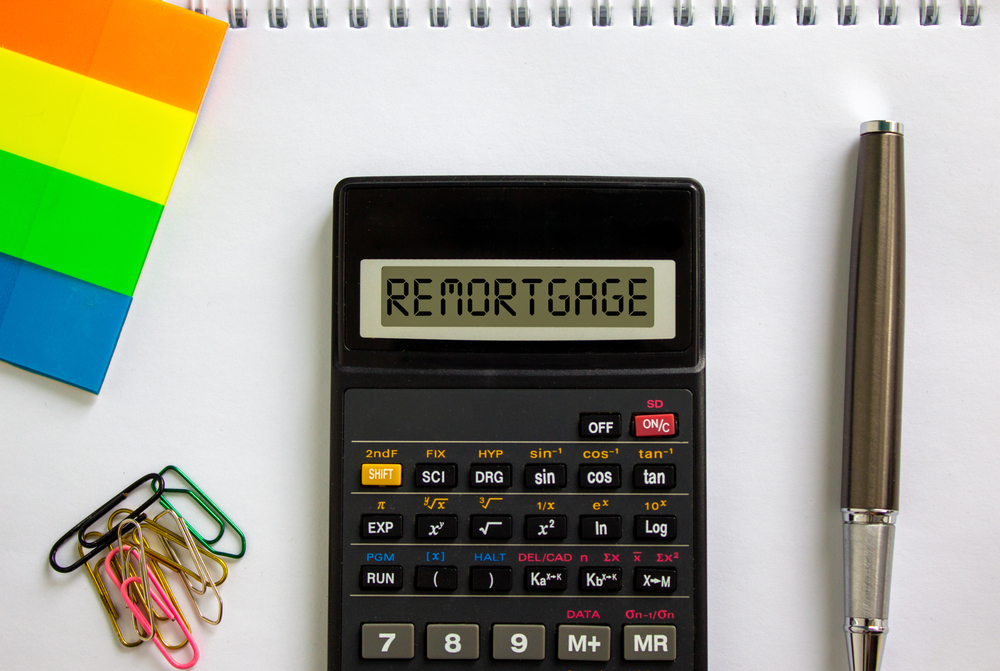Remortgaging can help you save on your mortgage payments or generate cash without selling your home.
It’s not for everyone all of the time, however, and you should always weigh up your options before considering a remortgage.
In this guide, we explain what remortgaging is, how it works and the things you should consider before you commit.
What is remortgaging?
Remortgaging is when you move your mortgage loan to a new lender or switch to a new deal with your current lender – without moving home.
The most common reason for remortgaging is when your existing mortgage deal is due to end.
When that happens, your lender will move your loan on to their standard variable interest rate, meaning your monthly repayments could go up.
By remortgaging on to a new deal, either with your current lender or a new lender, you could secure a better interest rate and pay less.
The reasons people remortgage
The are some major benefits to remortgaging and the reasons why people remortgage include:
1. To secure a cheaper interest rate
Whether you’re due to move on to your lender’s standard variable rate (SVR), or interest rates are more attractive now than when you initially took out your mortgage, remortgaging can be a great way to secure a better rate.
If you’ve paid down some of your original mortgage and your property has increased in value, your loan-to-value (LTV) will be lower than when you originally took out your mortgage.
This can open up lower interest rates for you to consider through a remortgage.
Moving on to a lower interest rate means you’ll pay less interest on your mortgage over its term and your monthly repayments should be lower.
2. To lock in an interest rate
The Bank of England’s base interest rate forms the basis for lender mortgage rates.
When the Bank rate rises, mortgage rates usually follow and this can lead to homeowners remortgaging to lock in a cheap rate before further rises in the future.
For example, the Bank rate rose from 0.1% to 4% between December 2021 and February 2023 and the prospect of those rises during that time would have led to many homeowners locking in fixed rate remortgages.
3. To consolidate debt
If you have substantial debts on top of your mortgage, sometimes remortgaging can be an option to consolidate those debts by borrowing more against your property.
However, it’s important to seek independent financial advice before doing this.
Consolidating debt by borrowing more money through a remortgage means that debt will be secured against your home.
And although mortgage interest rates are often lower than rates for personal loans and credit cards, you could end up paying more over the term of your mortgage.
4. For more flexibility
All mortgages
come with terms and conditions and sometimes remortgaging to a different deal can give you more flexibility on:
- Overpaying your mortgage
- Switching to a different type of deal, such as a tracker, from a fixed rate
- The term of your mortgage, which you may be able to increase through a remortgage – although this could mean you pay more over the term
5. To secure more borrowing
If you’ve built up substantial equity in your home, you may be able to remortgage and free up some of that cash for:
Home renovations
University fees for your children
Starting a business
Buying a car
For example, let’s say you buy a home for £300,000 with a £50,000 deposit as initial equity and a £250,000 mortgage.
Three years later, you’ve paid down £15,000 of your mortgage, leaving £235,000, and your property’s value has increased to £340,000.
That means your equity is now £105,000 and by remortgaging for the same £250,000 as you originally borrowed, you’ll free up £15,000 of your equity to use for something else.
How remortgaging works
When you remortgage, your current loan is paid off with the amount you borrow through your remortgage and the amount is secured against your property.
However, remortgaging is usually far simpler than applying for a mortgage when you’re buying a new property:
1. Remortgaging with your current lender
Remortgaging through your existing lender is usually much more straightforward than doing so with a new lender.
As your lender will already be aware of much of your financial situation, they may not require the same level of information as they did when you initially took out your loan.
That could mean:
- They don’t need to do a credit check
- They don’t need to do a valuation on your property
However, if you’re looking to borrow more through a remortgage, your lender will undertake more vigorous affordability checks.
When you remortgage with your current lender, they’ll normally contact you if your deal is about to end.
At this stage, you should ask for a redemption statement, which is the amount remaining on your loan and the amount you’d need to borrow through a remortgage.
If you’re happy with the rates and deals on offer through your current lender, your remortgage may be able to be completed online with a few clicks.
Sometimes these kinds of remortgages are known as ‘product transfers’.
2. Remortgaging with a new lender
Remortgaging with a new lender can be more complicated than doing so with your existing lender – and more expensive
The first step of a new lender remortgage is to obtain an agreement in principle (AIP).
This tells you what the new lender may be prepared to loan you, without undertaking a full credit check.
Once you have your AIP and if you’re happy with the lender’s deal, rate, and terms, you’ll need to submit a remortgage application.
This will be similar to when you first took out your mortgage and your new lender will need:
- Documents that prove your earnings
- Details of any outgoings and debts
- Proof of identity and address
The lender will also carry out a credit check and a valuation on your property.
You’ll also need a conveyancer to deal with the legal work surrounding your new mortgage.
It’s possible to fail a remortgage application with a new lender if they feel.
A remortgage application usually takes between four to eight weeks, but this can vary depending on the complexity of the remortgage and the individual lender.
The risks of remortgaging
While remortgaging can help you to secure a better interest rate and can give you more flexibility, there are some risks to be aware of, including:
1. Your circumstances have changed
If your financial position has changed since you originally took out your mortgage, a new lender may not be prepared to approve your remortgage application.
In this scenario, you may be best off staying with your existing lender but you should always seek independent financial advice to assess your options.
2. You may incur more costs and fees
Remortgaging through a product transfer with your existing lender can help to reduce the fees you pay.
Although you may still pay an arrangement fee, your lender may not need to carry out a physical valuation of your property and you should require a conveyancer.
If you remortgage with a new lender, however, you may have to pay all of those fees up front.
It’s possible to remortgage during a fixed term deal, but if you do so, you may also face early repayment penalties.
3. Negative equity
If your property’s value falls to below your outstanding mortgage, this is known as negative equity.
Most common with borrowers who have very little equity in their homes, negative equity can make it extremely difficult to remortgage.
When can I remortgage?
Although you can remortgage at any time, doing so when you’re still tied to your existing mortgage deal could mean you have to pay early repayment charges.
The most common time to remortgage is at the end of your deal when your mortgage may become more expensive due to your lender’s standard variable rate (SVR).
Frequently asked questions
Do you need a deposit to remortgage?
You don’t need a deposit to remortgage.
Instead, you use the equity in your home as a deposit and your loan-to-value is calculated by your lender based on the amount you’re borrowing against the equity you have.
What do you need to remortgage?
To remortgage with a new lender, you’ll need:
- A mortgage redemption statement and figure from your current lender
- Pay slips and P60 showing your earnings
- Bank statements showing your outgoings
- Business accounts and tax returns if you’re self employed
- Proof of identity and address
You may also require some or all of this information when completing a product transfer with your existing lender, but not always.
Can you remortgage during a fixed term?
It’s possible to remortgage during a fixed term but you may have to pay an early repayment charge to do so.
Early repayment charges will be outlined in your mortgage agreement and usually taper off the closer you get to the end of your deal.
Can you pay off lump sum when remortgaging?
If you’re remortgaging at the end of your current deal and no early repayment charges apply, you can choose to pay down a lump sum when you remortgage.
Do I need a solicitor to remortgage?
If you’re remortgaging with a new lender, you’ll usually require a solicitor to deal with the legal side of the mortgage.
If you complete a product transfer with your existing lender, a solicitor isn’t usually required.
Can you remortgage with the same lender?
It’s possible to remortgage with the same lender and this is usually known as a ‘product transfer’.
Can you remortgage to buy another property?
It’s possible to remortgage your property and release equity to buy another.
If the equity you release is enough to buy the second property outright, you’d be left with one mortgage on your original property.
If the equity wasn’t enough, you would have to apply for a second mortgage to cover the shortfall.
Your lender will apply strict affordability and income checks and you should always seek independent financial advice.
What’s the difference between remortgaging and refinancing?
Remortgaging and refinancing are essentially the same thing.
However, a remortgage is usually when you’re only borrowing the same amount as your outstanding mortgage, whereas refinancing is when a remortgage is used to release equity – meaning you’ll owe more.




